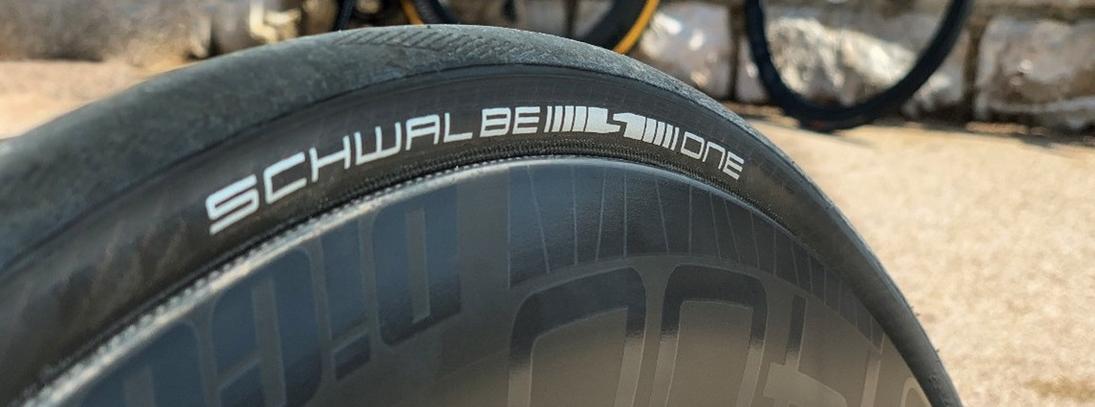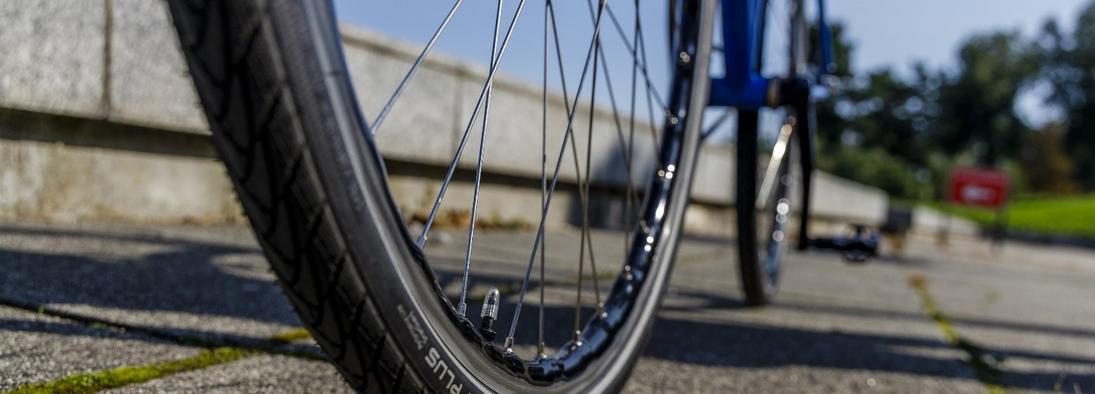Road Bike Tyres Buyer’s Guide

Getting the right tyre for your road bike can turn a good ride into a great one. Your tyres have the ability to make you faster, more efficient, and can provide a comfier ride. However, there's a large range of tyres to choose from, and most of the time, finding the right one for you is simply a matter of finding the perfect compromise between performance, durability, and price.
Types of Road Bike Tyre
The first step in finding the perfect tyre for your bike is to decide which type of tyre you want to use. There are three common types:
Clincher Tyres

The most common type of tyre found on a road bike, clincher tyres get their name from the way the bead (edge of the clincher tyre) hooks, or 'clinches', onto the inside of a wheel's rim using air pressure. They require an inner tube and come in two types; folding and rigid.
Rigid tyres have a bead made from steel, whereas folding tyres have a bead made from Kevlar. The advantage of folding tyres is that they're lighter, they can be easier to fit, and they're easier to carry. However, the trade-off is that they're more expensive than a tyre with a wire bead.
Overall, clinchers are popular amongst road bikes because they’re extremely easy to replace if you get a puncture and provide decent protection against tyre blow off as they can be inflated to twice their recommended maximum air pressure levels. The downside is that they’re heavier than a tubular tyre because they use both the tube and the bead, and they can also get a puncture quicker than a tubular or tubeless tyre.
Tubeless Tyres

Tubeless tyres are a more recent development from the world of mountain biking, but they're fast gaining traction in the road cycling community. While they're similar to clinchers, they don't use an inner tube. This means they need a specific rim to create an airtight seal, and they often use sealant inside the tyre to fill any holes.
There are two different types of tubeless road tyres: full tubeless and tubeless ready. Full tubeless tyres have air retaining capabilities due to the layer of rubber inside of the tyre. Tubeless ready tyres have a bead shape that seals against a tubeless compatible rim and with an addition of sealant, they can be lighter than a standard tyre and tube.
The advantage of tubeless bike tyres is that they tend to be lighter, have more puncture resistance as you can’t suffer a pinch puncture, and can be ran at lower pressures for increased grip. This also reduces the risk of a tyre blowout as there is no tube. But if you’re ever faced with a flat tubeless road tyre, check out our expert advice on how to fix it.
However, it can be difficult to install and remove the tyre to/from the rim due to the fine tolerance between the rim and the tyre to make sure there’s an airtight seal. Additionally, tubeless tyres are used for both mountain bikes and road bikes. Mountain bikes generally require low tyre pressure, but the higher pressure of road bikes makes it crucial for the tubeless tyre to have an accurate fit.
Another thing to keep in mind is that the range of tubeless tyre options is not as comprehensive as clinchers as there hasn’t been a push from the industry to adopt the system.
Tubular Tyres
Tubular tyres use an inner tube inside a sewn-up tyre, which is then glued to the rim. Although a tubular tyre looks simple from the outside, the construction of the tyre is very complex.
These are the lightest form of tyre as they come without a tyre bead or a rim hook of a clincher but are less used than clinchers. Instead, they're preferred by high-end performance racers because they don’t easily get a puncture but if they do, you can still carry-on riding while a support vehicle gets you and hence why they’re most often seen in racing.
However, the downside to tubular tyres is that you'll need to replace the entire tyre if you get a puncture out on the road. Properly repairing the tyre involves finding the puncture, removing the backing glue, unstitching the tyre, and pulling out a section of the tube, patching the tube and reversing the process to put it together again – which is another reason why they aren't really seen outside of racing.
So, are you debating between clincher vs tubular, tubeless vs tubular or tubeless vs clincher? Let’s clarify a few more things so you can get the tyre that is best suited to your needs.
Road Bike Tyre Width
While nearly all road bike wheels have a diameter of 700c (622mm), the width of the tyres varies. Traditionally, road bike tyres tended to be 23mm or 25mm, but wider tyres are currently popular, with 28mm, 30mm and 32mm now common. 25mm wide tyres are a good compromise between speed, grip, and comfort. However, wider sizes contain a larger volume of air so you can use lower pressures, which leads to increased grip, a comfier ride, and less rolling resistance.
Deciding which width is right for you depends on a couple of things. The most important thing to consider is the width of your wheel's rim and your bike's frame size. You need to ensure your bike's frame has enough clearance for the tyres you want, and you'll need to get a tyre that's wider than the wheel's rim width. After that, it comes down to preference. 25mm tyres are a good choice, but 28mm-32mm wide tyres help improve ride quality, so unless you’re racing or hunting for KOMs, a wider tyre may be for you. There's little difference in speed, and though you may think a wider tyre is slower, tests have shown that that's not the case!
Road Bike Puncture Protection

Many tyres come with some kind of puncture protection to keep you rolling. This is normally a strip of puncture-resistant material such as Vectren and Duraskin underneath the tyre's tread. This does add a little bit of weight, but it's a small price to pay when you think about having to repair punctures in the pouring rain!
Check out our expert advice on how to fix a puncture for more information on puncture protection and fixture.
Which road bike tyres do I need?
When it comes to choosing road bike tyres, the decision ultimately comes down to choosing between performance, durability, and cost.
Performance can be further broken down into weight, grip, and speed. Do you want a super-light, speedy tyre, or are you content with one that's marginally heavier? Durability usually comes down to puncture protection; tyres that use inner tubes run the risk of 'pinch flats', which tubeless tyres do away with.
And then there's the cost; how much are you willing to fork out? Once you've got a good idea of what kind of road tyre you're looking for, whether it’s tubeless, clincher or tubular, head over to our tyres category and take a look at what we have in stock. And if you need any help at all, simply pop into a your local Halfords store, where one of our in-store experts will be more than happy to lend a helping hand.
Shop Road Bike TyresRoad Bike Tyre FAQ’s
Here are some quick answers to common questions around road bike tyres that may help you speed up your search.
What pressure should road bike tyres be?
A healthy tyre pressure range for road bikes is around 80-130 PSI. However, tubeless tyres can often be run at lower pressures as they are not at risk of pinch punctures. Check your tyre’s sidewall for the recommended pressure limits and read our Bike Tyre Pressures page to find out more.
How to pump road bike tyres?
Road bike tyres use Presta valves which should be easy to pump up with a standard capacity hand pump. They won’t leak air unless they’re pressed down, so as long as your pump head is compatible with Presta valves (as opposed to Schrader valves, which are too wide for road bike tyres), you’re good to go.
When to replace road bike tyres?
A good set of tyres will most likely last you a couple of thousand miles. Knowing when to replace them can be tricky; it depends on your weight, the terrain you ride on, frequency of usage, and more.
If you’ve noticed that you’re getting an unusually high number of flats, that can be a good indicator that it’s time to invest in a new pair of tyres.
Browse our range